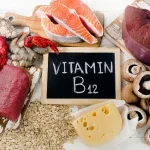
Image Source: BigStock
A popular belief among people who are a bit interested in a healthy lifestyle, more specifically the claim that citrus is the best source of vitamin C. Such a belief seems seemingly logical by their sour taste because ascorbic acid itself (vitamin C) is by us associated with something sour. But are citrus actually the best source of vitamin C?
A bit of theory …
Vitamin C, among others, is an antioxidant, neutralizes free radicals, inhibits lipid peroxidation, participates in the biosynthesis of collagen and steroid hormones. What’s interesting and definitely less known – it can help in your training results! Unfortunately, due to the lack of human L-gulonolactone oxidase enzyme, it is not possible to synthesize L-ascorbic acid in the body. For this reason, vitamin C must be supplied with food.
Demand for vitamin C depends on age, sex, and physiological condition, but contrary to common beliefs, it is not so high. RDA for men is 90mg, for women – 75mg. In individual scientific sources, however, it can be found that the demand for it may be slightly higher – for example, in the case of athletes reaching 200mg per day. Such doses are not difficult to achieve from food[1,2].
With the insufficient supply of vitamin C, deficiency may occur. Symptoms include increased susceptibility to infection, reduced exercise capacity, impaired wound healing, or weakness of the body. However, deep deficiency leads to serious complications, such as scurvy, but in developed countries, this problem does not generally occur. Too high doses of vitamin C can lead to discomfort from the digestive system and increase the risk of kidney stones.
Sources in food – Are citrus fruits the best source of vitamin C?

Image Source: BigStock
As it turns out – definitely not. It is generally accepted that the source of vitamin C are mainly vegetables and fruits, with citrus fruits being the richest source. peppers, rosehips, parsley, black currants, or strawberries. The following are some sources of vitamin C with a content per 100g of the product:
- parsley 269mg
- peppers 125-200mg
- fruits of wild rose 250-800 mg
- blackcurrants 150-300 mg
- strawberries 46-90 mg
- grapefruit 30-70 mg
- lemons 40-60 mg
- oranges30-50mg
As you can easily notice – citruses are not a particularly rich source of vitamin C. Of course, they can appear on the menu, and the article is only meant to point out that they are not its richest source. (See also: [Best Vitamin C Serum] What Concentration Is the Best Vitamin C Serum?)
Interestingly – in Poland, the main sources of vitamin C include potatoes and cruciferous vegetables. However, it is not due to the high content of the aforementioned vitamin (because it is not a very generous source), and above all due to the high consumption of those [3].
Vitamin C losses
The loss of vitamin C during cooking can be up to 50% in the case of a heat peel. Therefore, to minimize the loss of vitamin C, it is recommended to steam vegetables or eat them in the raw form. Long storage of vegetables and fruits and their preserves, especially in inappropriate conditions, also leads to a rapid loss of the title vitamin. In order to preserve Vitamin C in food as much as possible, it is recommended to preserve it through, among others freezing or pickling methods
A word about the levorotatory controversy
So, you want to supplement vitamin C. You are going to pharmacy store, and see two things – pretty obscure can with a kilogram of vitamin C for 5$, and „new formulation with levorotatory vitamin C” – over a dozen capsules with not even 1 gram of a substance in it for 15$. You would think that the first one should be a lot worse than the second one. Also, it’s not levorotatory, right?
Wrong!
Both of those are particularly the same. Firstly – Vitamin C IS levorotatory from a legal point of view. Secondly – L abbreviation doesn’t mean that Vitamin C is levorotatory. It just indicates that it is an L-form of ascorbic acid (the second one – D-form is rarely to be seen – and the fact is that it’s not biologically active). So remember about that!
Summary
Citrus fruits are not the best source of vitamin C definitely, but they should be common in your diet plan. The right amount of vitamin C supply from food is essentially nothing to worry about, as it does not seem to be very difficult to provide it with conventional foods, especially with a diet where vegetables and fruits consumption is a daily routine.
About The Author:
Wojciech Nowosada – I have always been fascinated by how the human body functions. I constantly expand my knowledge of dietetics, mainly sports, medicine (endocrinology and psychiatry) and pharmacology. My interest, in particular, attracts brain work and the action of psychoactive drugs. I work with passion and try to keep up with the discoveries of science. In the meantime, I help people shape their dream silhouettes and adjust their mood.
Reference:




